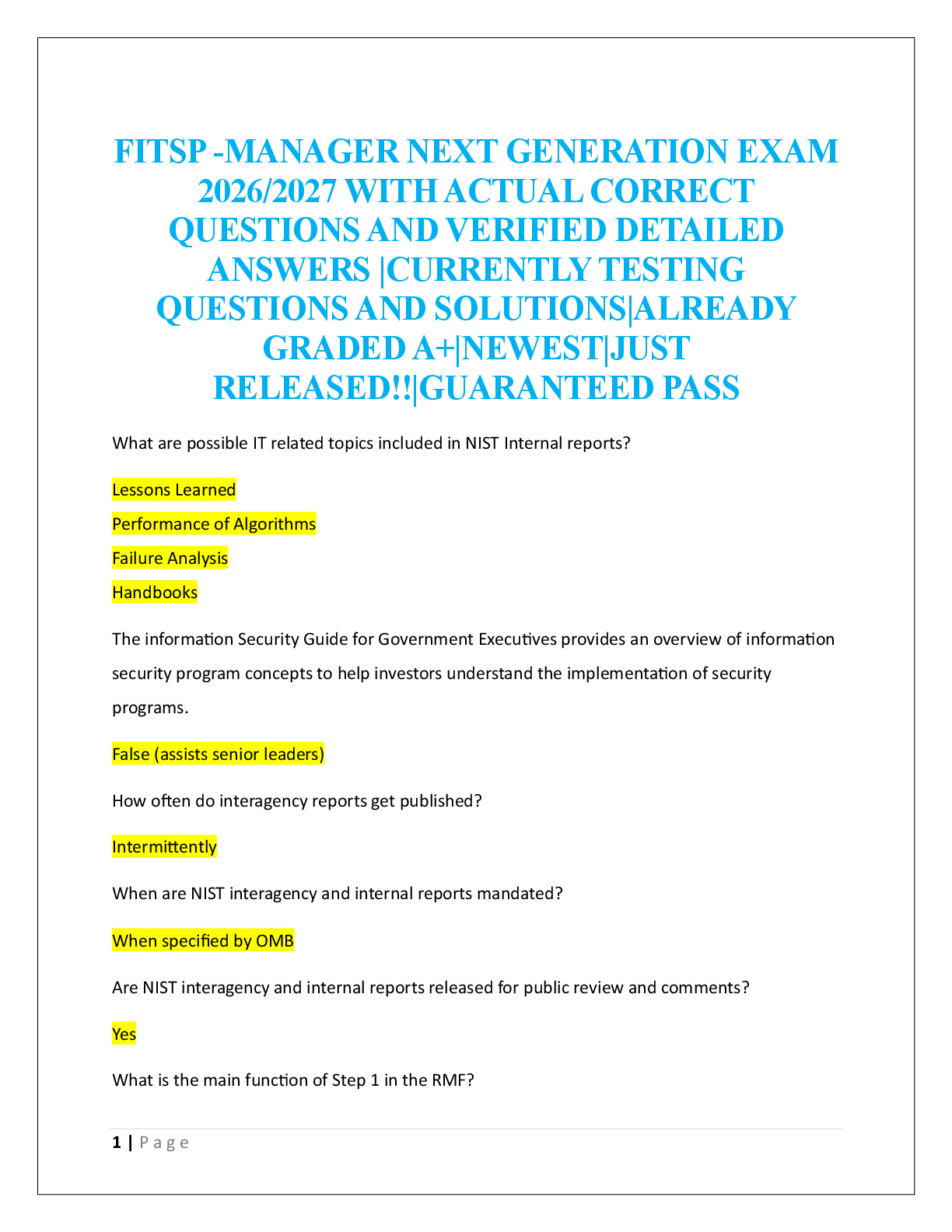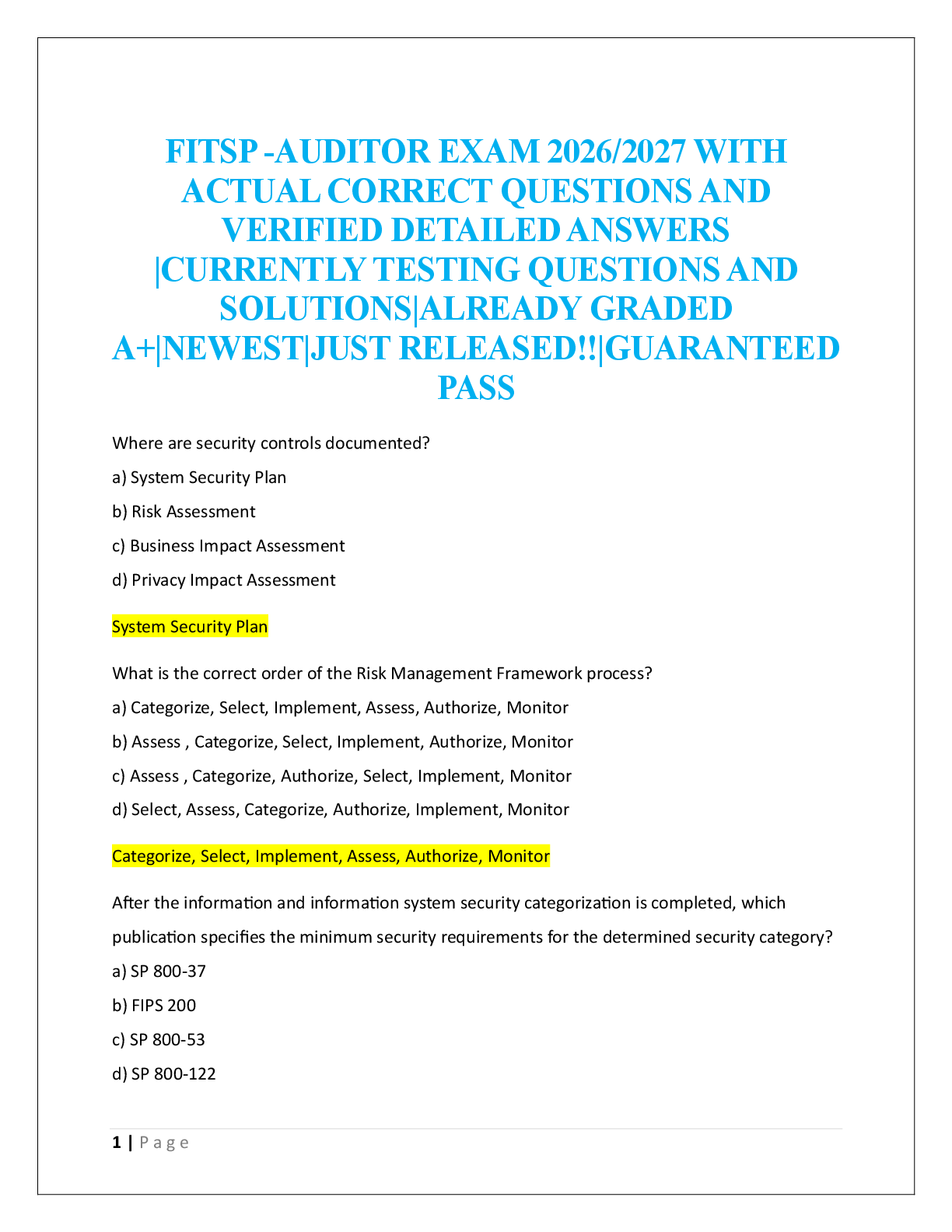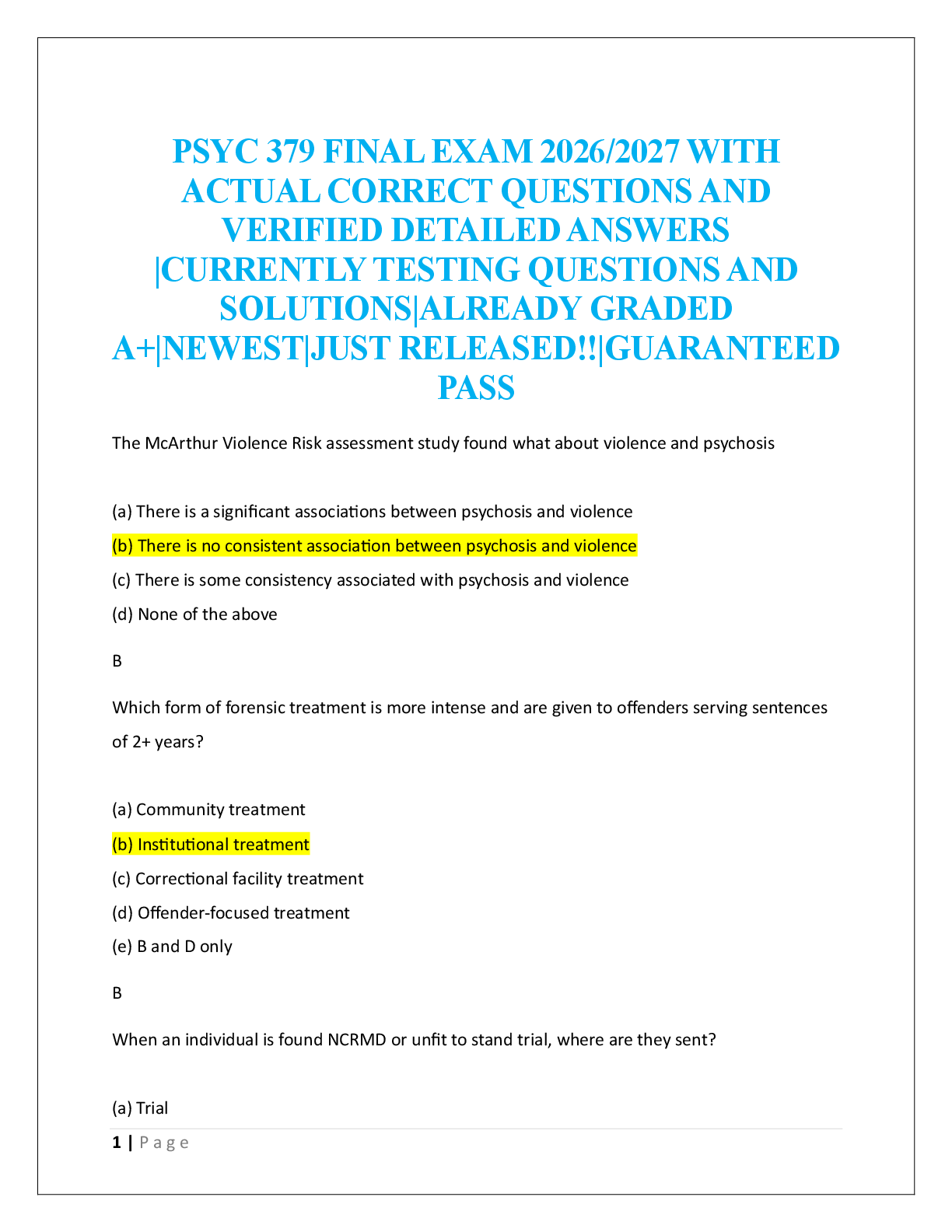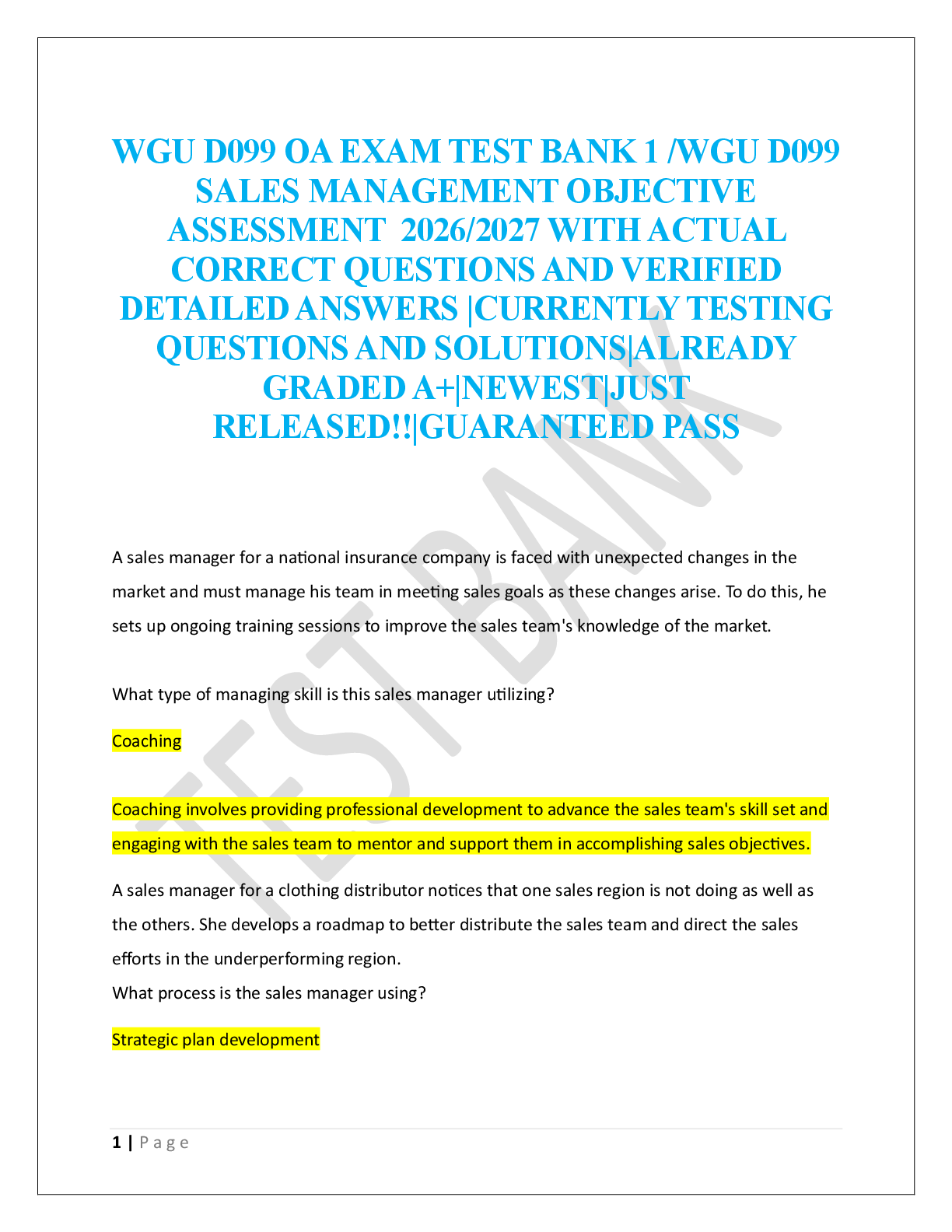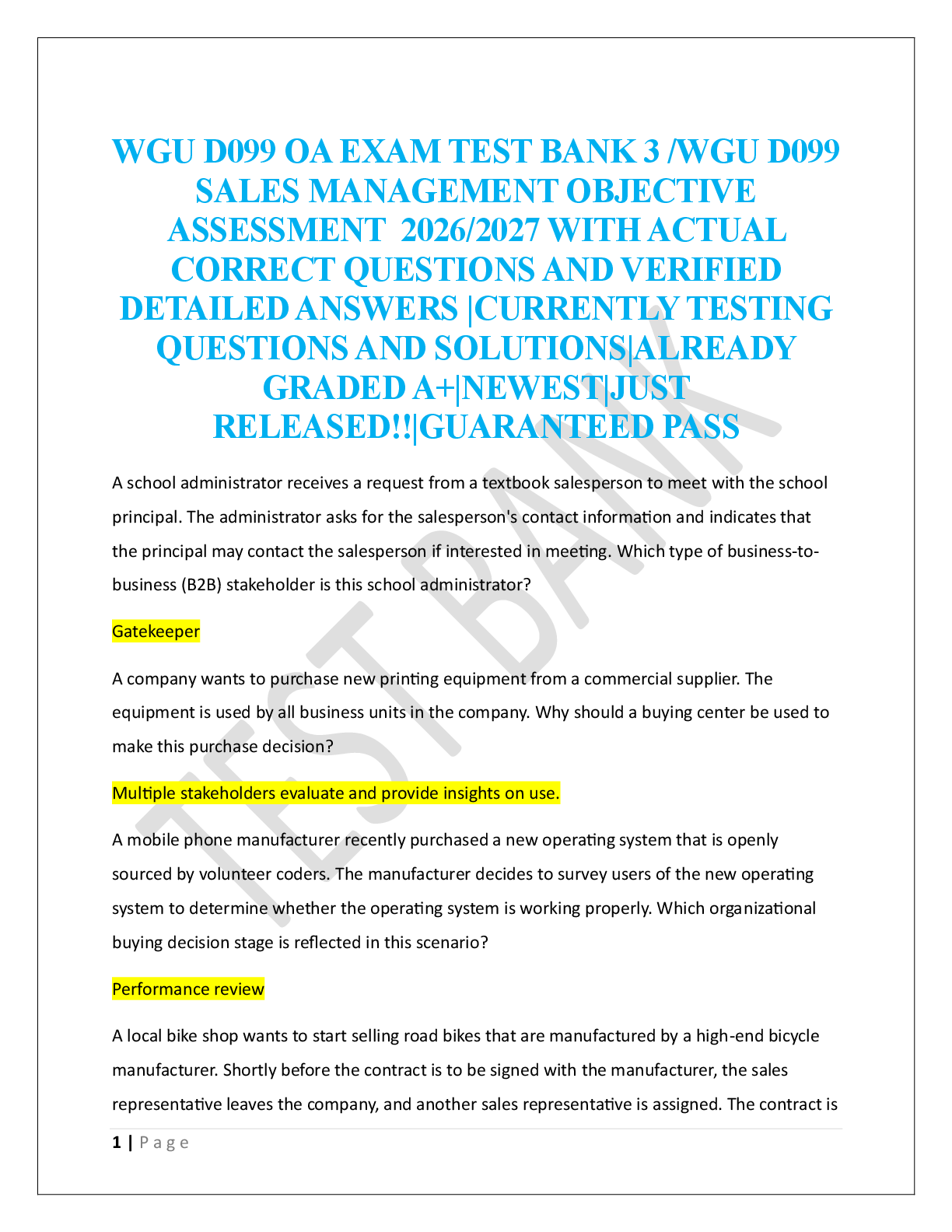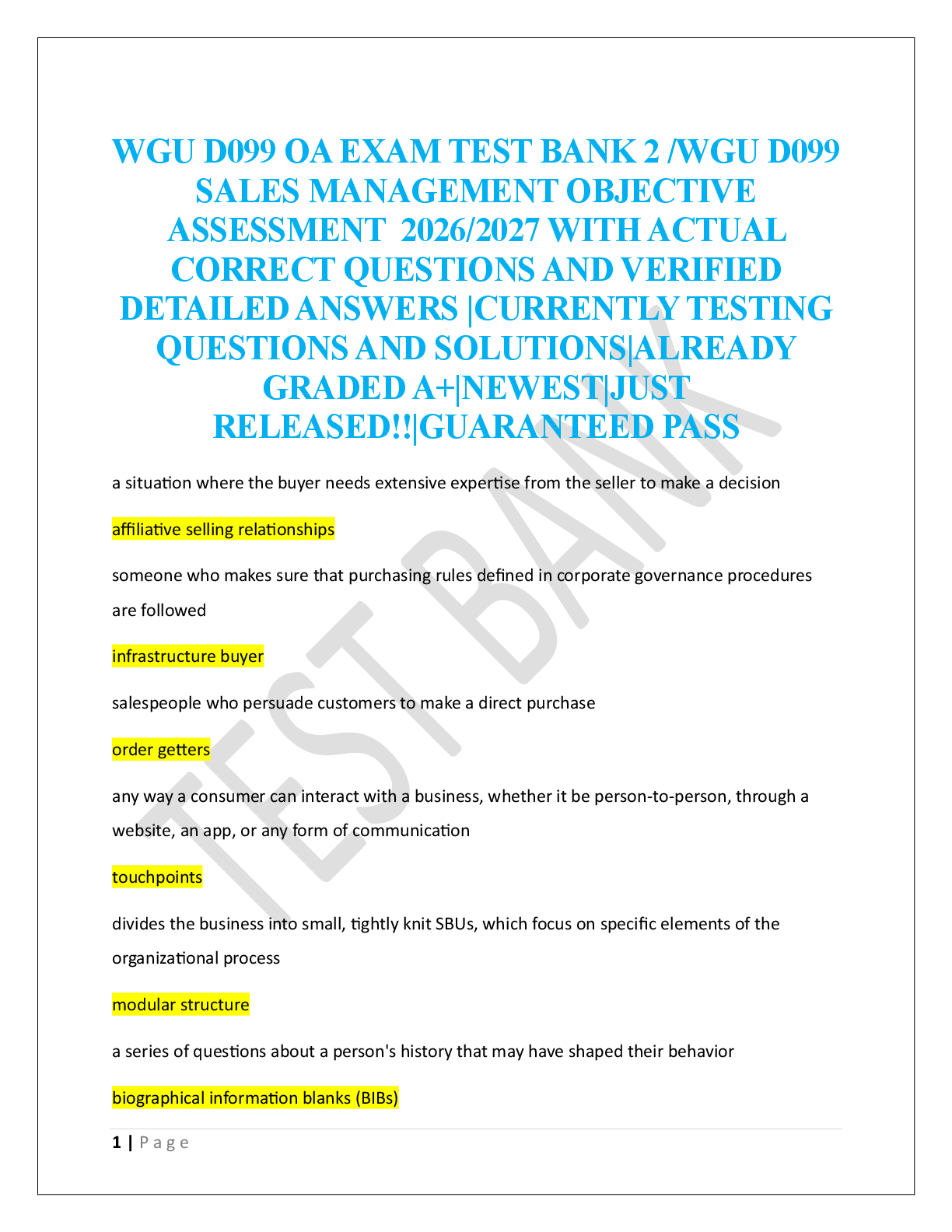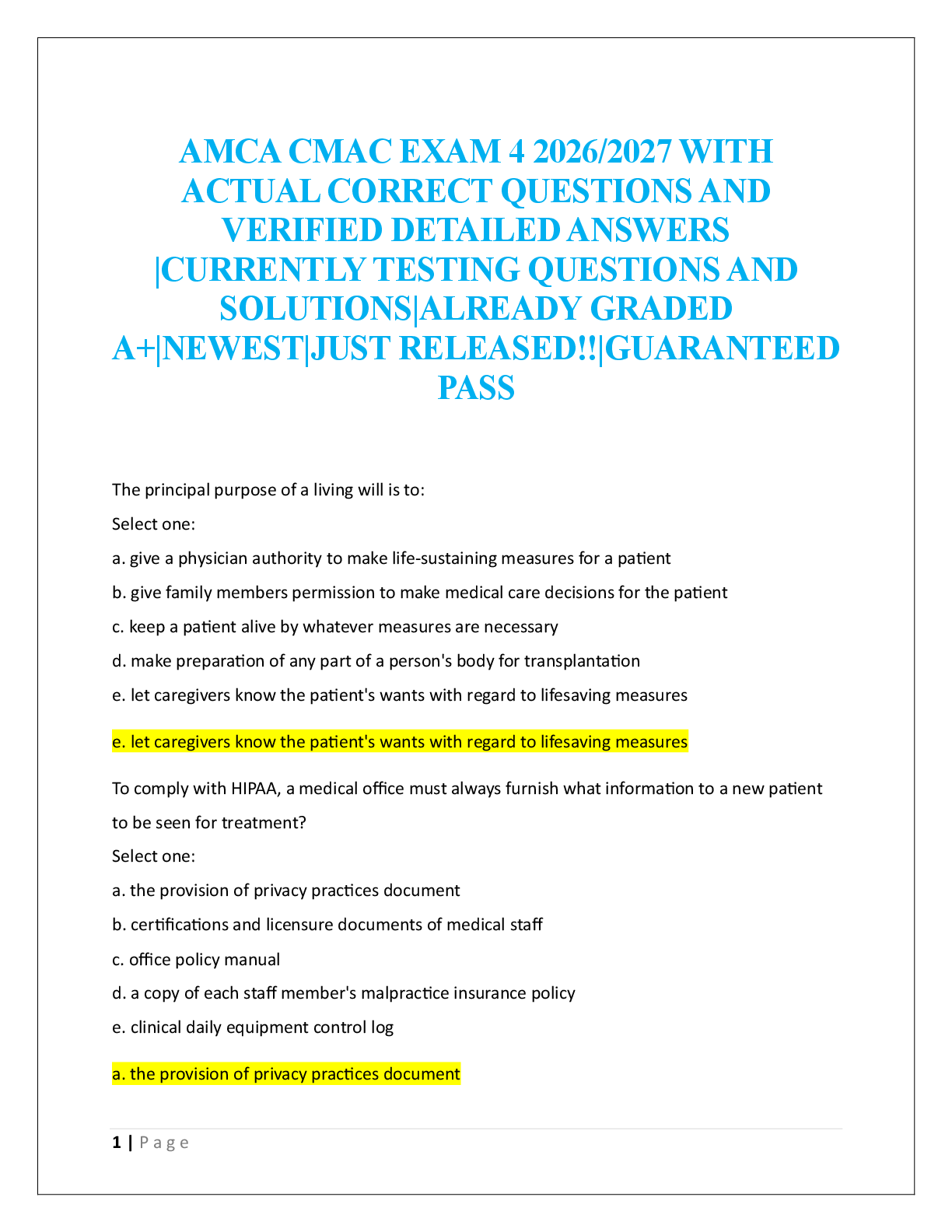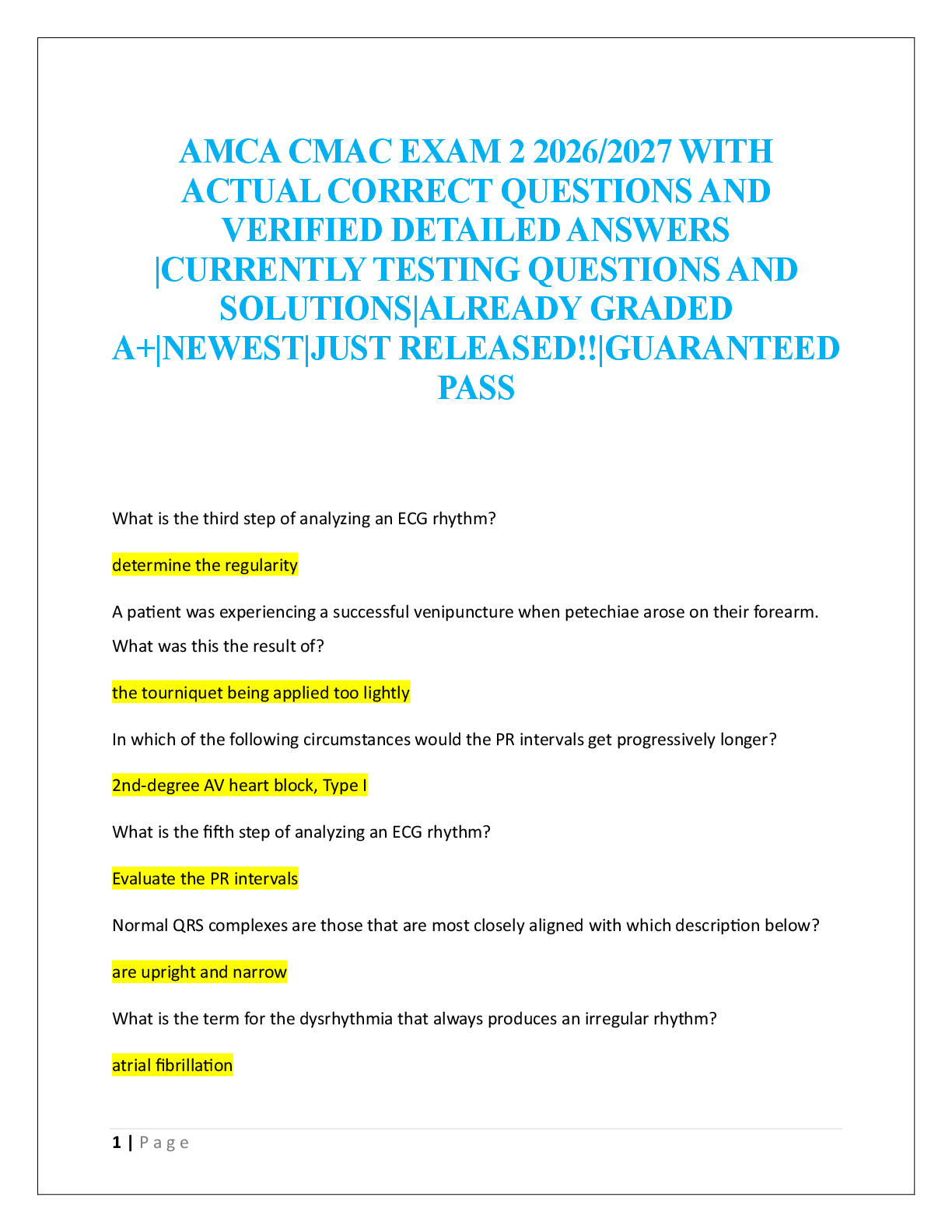N3 - Exam 3 Questions And Answers( Complete Solution Rated A)100%
Document Content and Description Below
N3 - Exam 3 Questions And Answers 1. A client is learning about cholesterol. The nurse explains that the good cholesterol transports plasma cholesterol away from plaques and to the liver for met aboli ... sm. This type of cholesterol is called: 1. high-density lipoprotein. 2. low-density lipoprotein. 3. very-high-density lipoprotein. 4. very-low-density lipoprotein. 2. A client has a blood pressure of 132/82 mmHg and a triglyceride level of 160 mg/dL. Based on these results, the nurse knows that the client has: 1 an optimal blood pressure and triglyceride level. 2 .a prehypertensive blood pressure and an optimal triglyceride level. 3 .a prehypertensive blood pressure and a borderline high triglyceride level. 4.stage I hypertension and a high triglyceride level. 3. A client is complaining of chest pain that occurs during exercise. This pain is relieved when the client rests. The nurse realizes that this client is experiencing which type of angina? 1. Prinzmetals variant angina 2. Silent angina 3. Stable angina 4. Unstable angina 4. A nurse is considering contraindications to fibrinolytic therapy. Which of the following patients is an appropriate candidate for fibrinolytic therapy? 1 .A patent with a peptic ulcer disease 2. A patient with a history of hemorrhagic stroke 3 .A patient with a history of a motor vehicle accident 1 year ago 4. A patient with inflammatory bowel disease 5. A client is at risk for coronary artery disease. Which of the following should the nurse instruct as modifiable risk factors for this health condition? (Select all that apply.) 1. Alcohol consumption 2. Diabetes mellitus 3. Family history 4. Gender 5. Low daily fruit intake 6. Psychosocial index 6. A client is experiencing a sudden onset of chest pain. Which of the following will the nurse do to manage this chest pain? 1. Administer intravenous morphine as prescribed. 2. Provide oxygen. 3. Insert an indwelling urinary catheter. 4. Position the client on the left side. 5. Administer nitroglycerin as prescribed. 6. Administer aspirin as prescribed. 7. A client, complaining of weight gain, has thin extremities, a buffalo hump, and a protruding abdomen. The nurse realizes that this client is most likely to be diagnosed with which disease process? 1. Addisons disease 2. Cretinism 3. Cushings syndrome 4. Obesity 8. A client tells the nurse that he is so thirsty that he has already consumed four pitchers of water. The clients urine output is 3500 mL in an 8-hour period. The client is recovering from surgery on the pituitary gland. What endocrine disorder is the client most likely experiencing? 1. Diabetes insipidus 2. Diabetes mellitus 3. Myxedema 4. Syndrome of inappropriate antidiuretic hormone secretion 9. Which of the following symptoms would suggest to the nurse that a client is experiencing symptoms of pheochromocytoma? (Select all that apply.) HYPERTENSION, AVOID TYRAMINE [Show More]
Last updated: 3 years ago
Preview 1 out of 9 pages

Buy this document to get the full access instantly
Instant Download Access after purchase
Buy NowInstant download
We Accept:

Reviews( 0 )
$15.00
Can't find what you want? Try our AI powered Search
Document information
Connected school, study & course
About the document
Uploaded On
Mar 17, 2022
Number of pages
9
Written in
All
Additional information
This document has been written for:
Uploaded
Mar 17, 2022
Downloads
0
Views
109


.png)







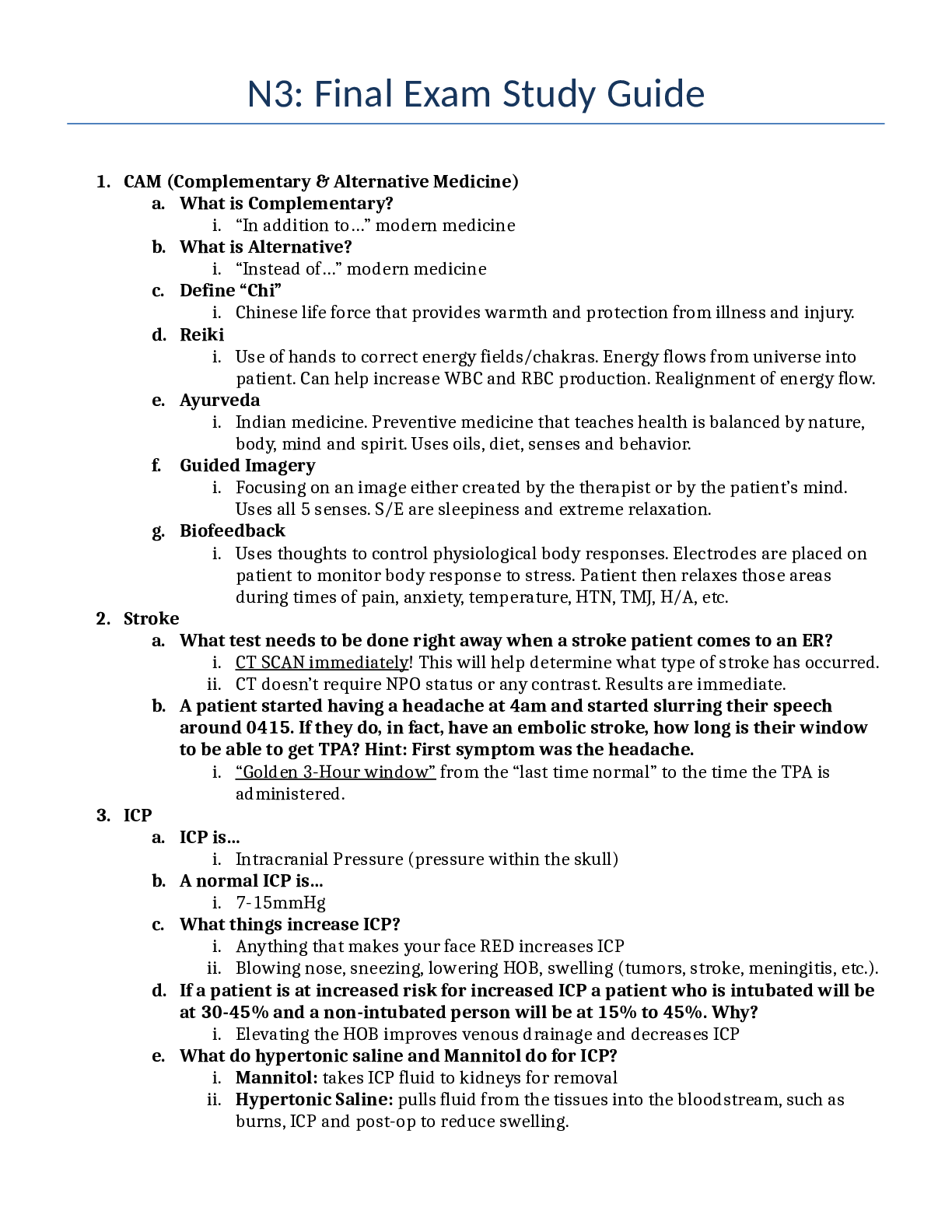
 (1).png)



